Cardiovascular function in term fetal sheep conceived, gestated and studied in the hypobaric hypoxia of the Andean altiplano
- PMID: 26339865
- PMCID: PMC4771801
- DOI: 10.1113/JP271110
Cardiovascular function in term fetal sheep conceived, gestated and studied in the hypobaric hypoxia of the Andean altiplano
Abstract
High-altitude hypoxia causes intrauterine growth restriction and cardiovascular programming. However, adult humans and animals that have evolved at altitude show certain protection against the effects of chronic hypoxia. Whether the highland fetus shows similar protection against high altitude gestation is unclear. We tested the hypothesis that high-altitude fetal sheep have evolved cardiovascular compensatory mechanisms to withstand chronic hypoxia that are different from lowland sheep. We studied seven high-altitude (HA; 3600 m) and eight low-altitude (LA; 520 m) pregnant sheep at ∼90% gestation. Pregnant ewes and fetuses were instrumented for cardiovascular investigation. A three-period experimental protocol was performed in vivo: 30 min of basal, 1 h of acute superimposed hypoxia (∼10% O2) and 30 min of recovery. Further, we determined ex vivo fetal cerebral and femoral arterial function. HA pregnancy led to chronic fetal hypoxia, growth restriction and altered cardiovascular function. During acute superimposed hypoxia, LA fetuses redistributed blood flow favouring the brain, heart and adrenals, whereas HA fetuses showed a blunted cardiovascular response. Importantly, HA fetuses have a marked reduction in umbilical blood flow versus LA. Isolated cerebral arteries from HA fetuses showed a higher contractile capacity but a diminished response to catecholamines. In contrast, femoral arteries from HA fetuses showed decreased contractile capacity and increased adrenergic contractility. The blunting of the cardiovascular responses to hypoxia in fetuses raised in the Alto Andino may indicate a change in control strategy triggered by chronic hypoxia, switching towards compensatory mechanisms that are more cost-effective in terms of oxygen uptake.
© 2015 The Authors. The Journal of Physiology © 2015 The Physiological Society.
Figures
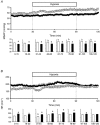
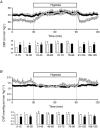
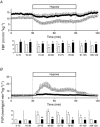
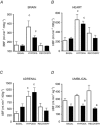
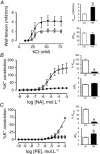
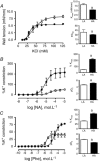
References
-
- Alonso JG, Okai T, Longo LD & Gilbert RD (1989). Cardiac function during long‐term hypoxemia in fetal sheep. Am J Physiol Heart Circ Physiol 257, H581–H589. - PubMed
-
- Bennet L & Gunn AJ (2009). The fetal heart rate response to hypoxia: insights from animal models. Clin Perinatol 36, 655–672. - PubMed
-
- Boyle DW, Hirst K, Zerbe GO, Meschia G & Wilkening RB (1990). Fetal hind limb oxygen consumption and blood flow during acute graded hypoxia. Pediatr Res 28, 94–100. - PubMed
Publication types
MeSH terms
Grants and funding
LinkOut - more resources
Full Text Sources

